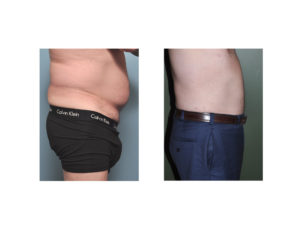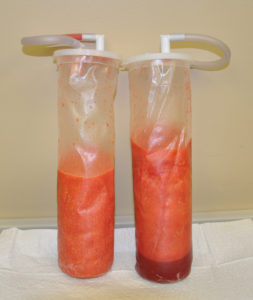
At its most basic level, liposuction is a simple two-stage process for removing fat. A hollow tube (cannula) is put under the skin, the tube is moved back and forth until the fat is dislodged, and the attached vacuum source draws the fat back through the cannula into the tubing and finally into the plastic bottle.
Despite this apparent simplicity, there is more science to it than that. There are three interesting components about liposuction, all of which contribute to its safety and effectiveness. These include tumescent fluid infiltration, vacuum pressure, and cannula size and design.
The placing of fluid during the liposuction operation before doing the suctioning is an integral part of the operation. I frequently get asked by patients if I do tumescent liposuction. Patients think that this is a special method of liposuction, when in fact, it is used in every liposuction procedure. Putting large amounts of fluid into the fat areas to be suctioned beforehand is known as tumescent infiltration. This achieves two fundamental things, substantially reduces bleeding (from the fat being broken up by the liposuction tube and it distends the fat compartments which make the tube easier to pass through the fat being suctioned. Without tumescent infiltration, liposuction would quite bloody, give patients more pain, and have them bruised for a month, if not longer.

The tube (cannula) that is actually used under the skin differs in diameter and the holes at the tip. In days gone by, the cannulas were quite large but left a lot of depressions in the overlying skin after due to removing too much fat too fast and in large pieces. Today, small cannulas are used which removes fat more carefully and in smaller pieces, decreasing the problem of skin irregularities after surgery. The tip of the cannula is rounded so that it travels through the fat easier with less chance of penetrating something you shouldn’t. The holes at the tip are where fat sticks to and then gets sucked into the cannula. The more holes there are at the tip achieves two effects; increases the shearing effect (like a blade) on fat and makes more cross-sectional area through which fat can be suctioned.
Currently, there are newer methods of liposuction or to be accurate, methods of loosening up the fat. These include ultrasonic and laser-assisted. While they sound quite advanced (and they are), there is no convincing evidence at this time that they are actually better than traditional liposuction. Better meaning….you get more fat removed, smoother results, and recover faster with less bruising and pain. They are marketed by the manufactures as such but there is no solid science to prove it. And they still require suction to pull out much of the loosened or liquefied fat.
Dr Barry Eppley
Indianapolis, Indiana


